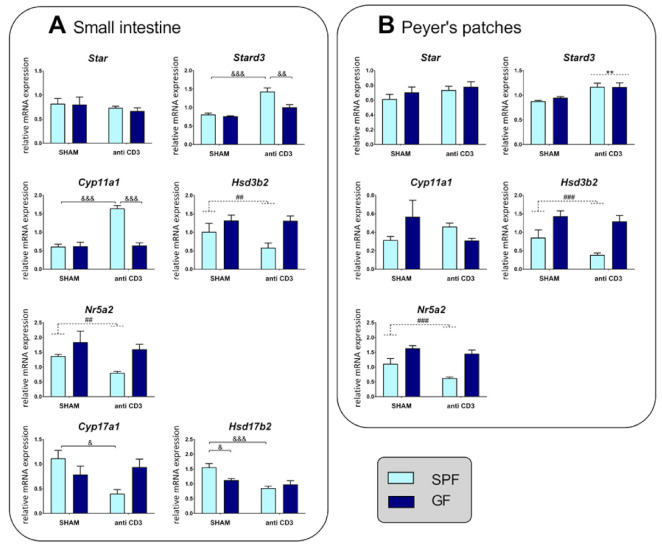Figure 2.
Effect of microbiota and acute immune stress on the expression of steroidogenic enzymes in the small intestine (A) and Peyer’s patches (B). The abundance of the mRNAs was determined in mice that were treated with the anti-CD3 antibody or saline 4 h beforehand. SPF, specific pathogen-free mice; GF, germ-free mice; SHAM, mice injected with saline; anti-CD3, mice injected with anti-CD3 antibody; Star, steroidogenic acute regulatory protein; Stard3, functional homolog of Star; Cyp11a1, cholesterol side-chain cleavage enzyme; Hsd3b2, 3β-hydroxysteroid dehydrogenase type 2; Cyp17a1, 17,20-desmolase; Hsd17b2, 17β-hydroxysteroid dehydrogenase type 2; Nrp5a2, liver receptor homolog-1. The data are expressed as means ± SEM. Where an interaction effect was observed, the ampersand sign indicates a significant difference (& p < 0.05, && p < 0.01, &&& p < 0.001). Where no interaction effect was observed, a main effect of microbiota has been marked by placing a dashed horizontal line with a hash sign (## p < 0.01, ### p < 0.001) above the bars for the SPF groups, whereas a main effect of stress has been marked by placing a dashed horizontal line with an asterisk (** p < 0.01) above the bars for the stress-exposed groups.

